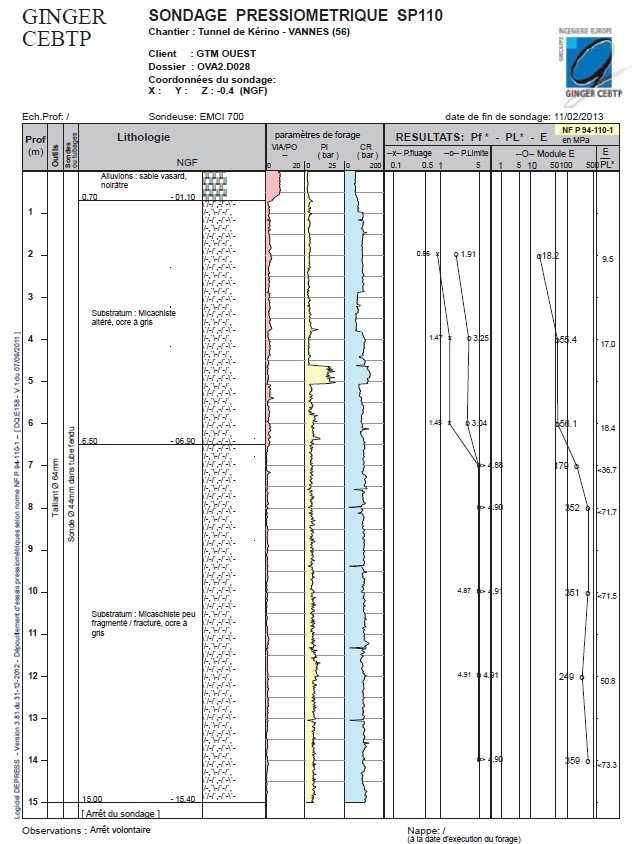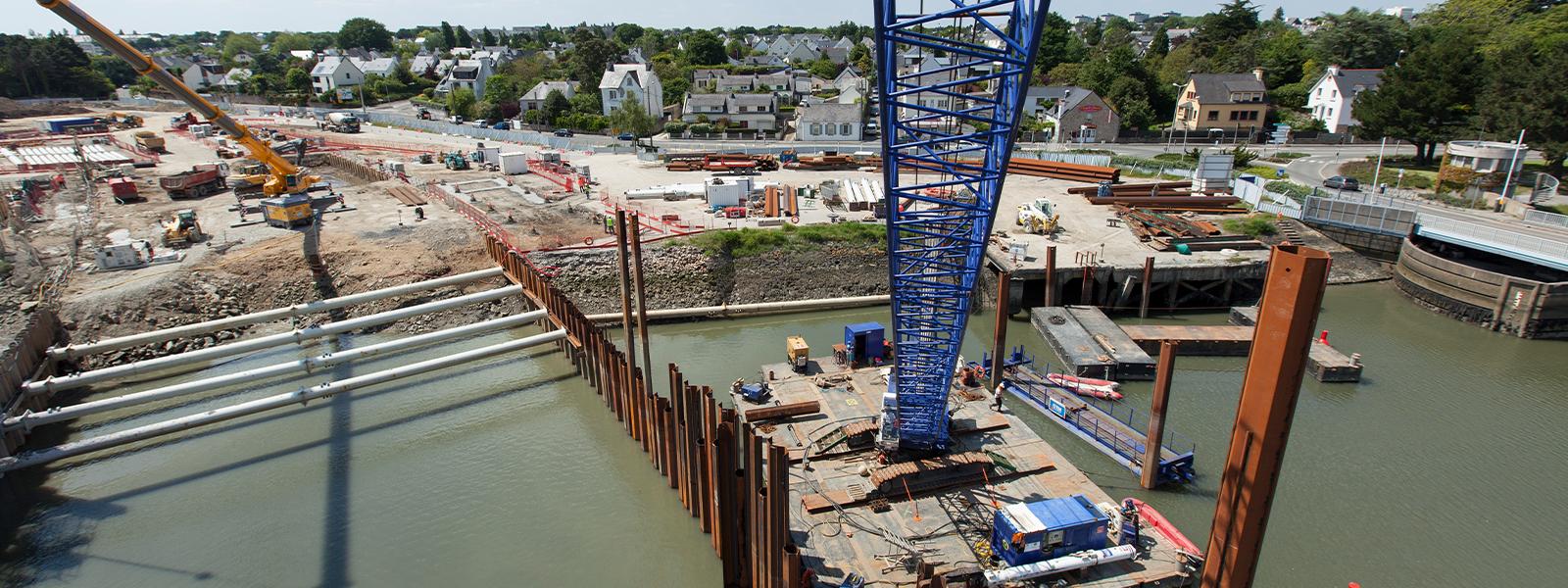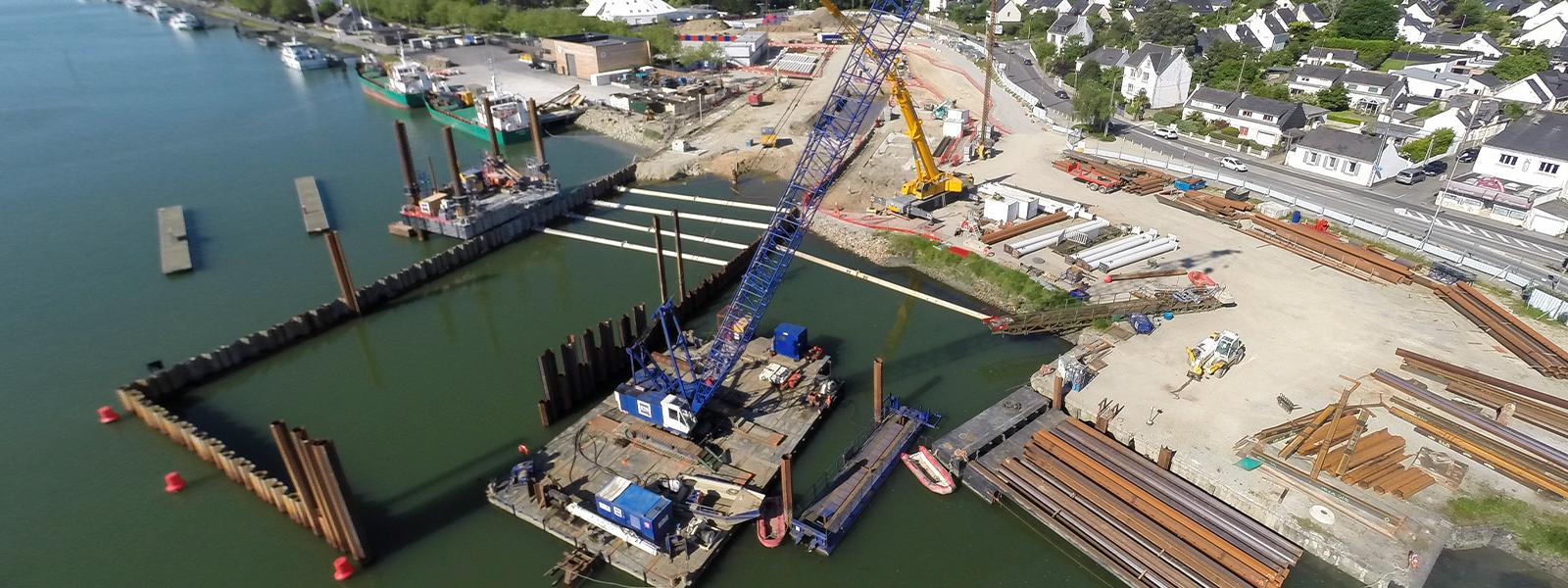
Temporary Applications
Kérino tunnel in Vannes, FR | 2013
Download the full case study
The Kérino swing bridge has been replaced by an underpass beneath the entrance to the harbour. This enables road and water traffic to move fluidly simultaneously. The underpass comprises two lanes for vehicles and a separate lane for pedestrians and cyclists. It consists of a 153-m-long western approach ramp, a 248-m-long cut-and-cover tunnel section, and a 150-m-long eastern approach ramp.
A total of 1,061 tonnes of 3.5 to 16.5-m-long double PU 18 sheet piles and CU 18-2 box piles made from S 355 GP grade steel were used to build two cofferdams in the river. A gap was left around the cofferdams at all times during the three-year construction period so that boats could continue to leave and enter the port.
The first phase of works involved dredging the River Marle, after which work on the tunnel began on the west bank with the construction of a steel sheet pile cofferdam so that the cutand-cover tunnel could be excavated in the dry. The approximately 130-m-long, 30-m-wide three-sided cofferdam was built out from the riverbank, half on land and half in water. It was a composite pile wall made up of steel double PU 18 sheet piles and CU 18-2 box piles. The same method was also used on the east bank: here, the three-sided cofferdam was about 100 m long and 30 m wide, 70 % on land and 30 % in water.
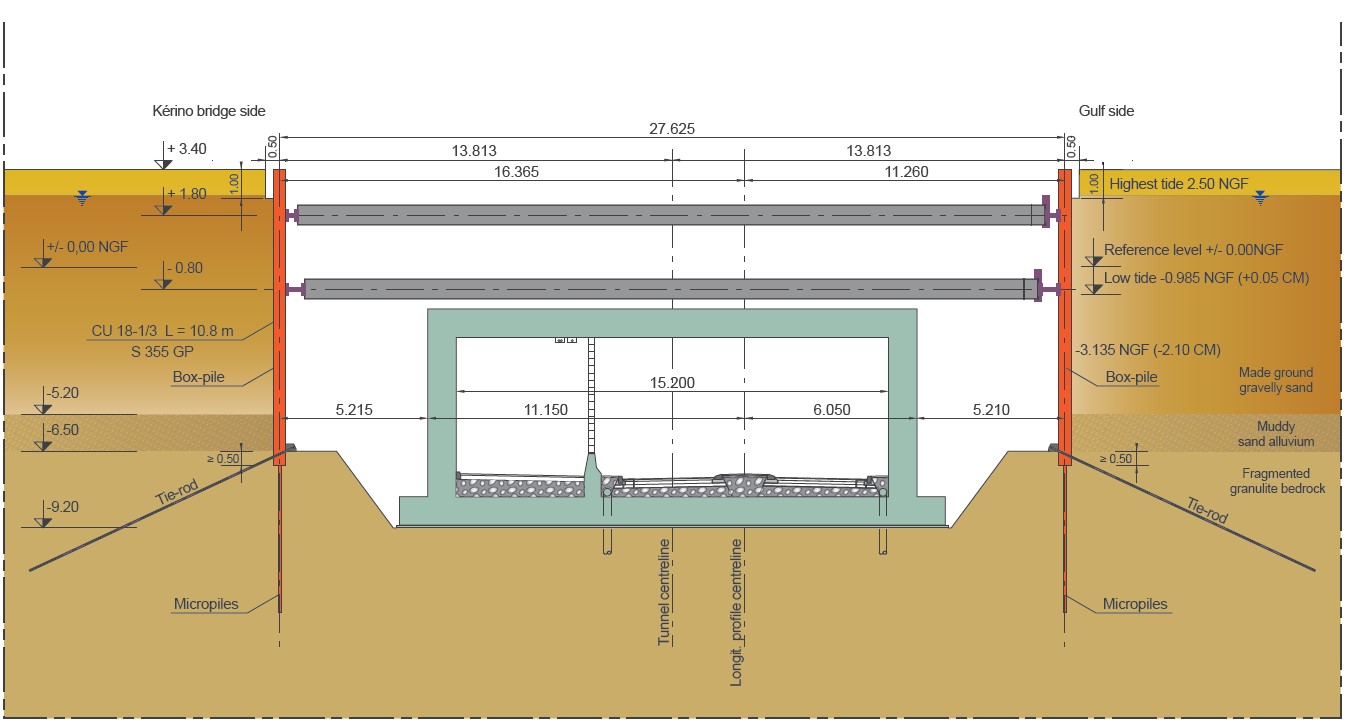

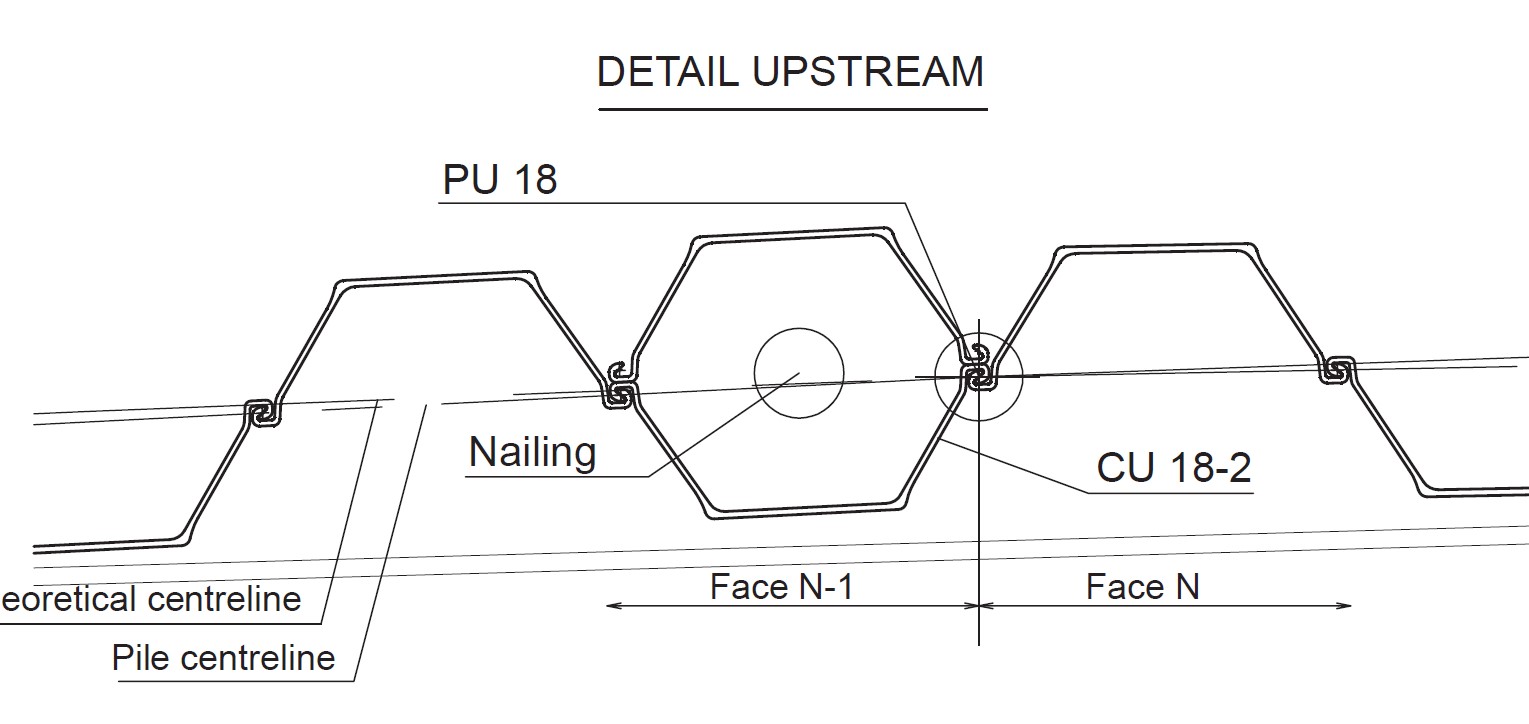
The watertightness of both cofferdams was ensured by applying on the entire length of the pile clutches the Beltan® bituminous sealant.
The piles were driven to the rockhead, a surface-weathered micaschist with pl ranging from 1.9 MPa at the top to more than 5 MPa at depth. The foot of the cofferdam was anchored by micropiles. This involved drilling into the rock at the centre of the CU 18 box piles and injecting cement grout. Inclined tie-rods were then installed in the landward part of the cofferdams after excavation. In accordance with the work zone, up to three levels of compression braces were installed to ensure the stability of the sheet pile walls whose maximum depth relative to the natural ground line was over 11 m. These steel tubes were about 27 m long.
During the second phase of works, the two cofferdams were connected after construction of a watertight box at the end of the western cofferdam, making it possible to open a navigation channel on the western side. When the civil works were over, the remaining sheet pile walls were cut back to the original ground line and the navigation channel was restored to its original width.
The piles were driven using, first, a variableeccentric-moment ICE 18RF free-hanging vibratory hammer suspended from a 65-tonne lattice-jib crane, then driven to refusal with an IHC S40 hydraulic hammer. Modular barges were used for work in the river. A floating driving guide and a legged guide with a special template were used because of the «combi-wall» nature of the cofferdam, particularly for driving the CU 18 box piles.
Around eight pairs of sheet piles were driven per day.
Around 44,000 m3 of soil was dredged from the river bottom.
Work began in June 2013, with pile driving starting in October that year. The underpass was officially opened on June 24, 2016.
The work was carried out under a 28-year public–private-partnership contract (3 years for construction, 25 years of maintenance). The total cost was estimated at 76 million euros. Some 14.5 million euros of this was funded by the Vannes metropolitan authority, the Morbihan general council, and the Brittany regional council.
